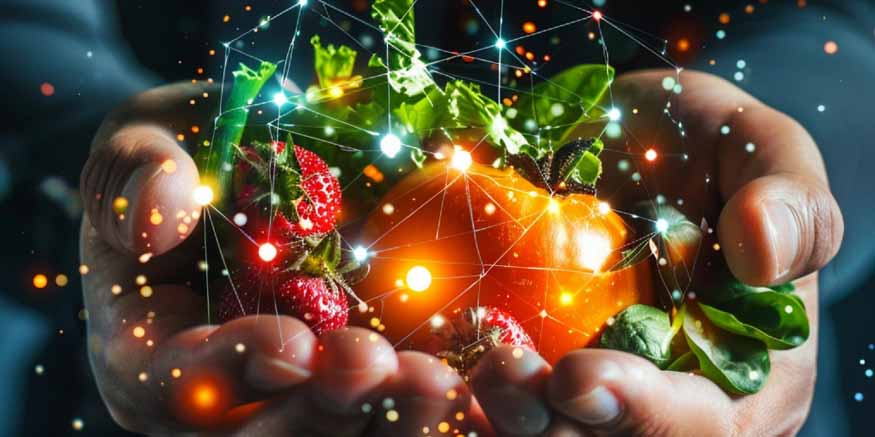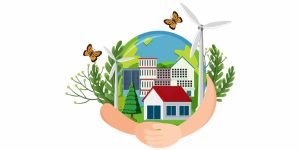The Future of Food: From Lab-Grown Meat to Vertical Farming

As compared to earlier times, the food business is changing more rapidly. Scientists and researchers have to change how we grow or produce, and consume food as populating is increasing, shifting climates, and decreasing natural resources. Food’s future lies not only in taste or convenience but also in sustainability, technology, and creative thinking. Two examples of how we are adapting our sustainable food production methods to meet global demands while reducing our environmental effect are vertical farming and lab-grown meat. Additionally, this shift is making food science careers more exciting.
Food System Transformation
- Earlier, farming and animal husbandry provided the majority of the food needed to meet daily demands.
- These approaches now have to deal with serious problems such as rising pollution, water scarcity, and land scarcity.
- The food industry’s primary goals for the future are straightforward: reduce waste, conserve resources, and guarantee that everyone has access to wholesome food.
- To create safe and sustainable ways to grow our food, food scientists employ research, technology, and innovative ideas.
- Communities are able to adapt to climate change and obtain dependable food thanks to new farming and food production techniques.
Interest in Meat grown in Lab
- Also known as cultured or cultivated meat, is produced in a laboratory using animal cells rather than by animal husbandry.
- Despite far less harmful to the environment, lab-grown meat is nearly the same as regular meat in terms of appearance, flavour, and cooking method.
- Avoiding animal killing, laboratory meat production conserves water and land and lowers greenhouse gas emissions.
- For the future of food, lab-grown meat is therefore a morally and environmentally sound option.
What is Lab-Grown Meat?
Researchers take a little sample of animal cells, typically stem or muscle cells. These cells grow in a highly nutritious solution that is similar to what an animal would naturally eat. The cells grow and eventually form muscle tissue—the exact part of the meat that people eat. This process takes place in large tanks which carefully control the temperature, nutrients, and hygiene to create safe, high-quality meat.
Easy Vertical Farming
- Vertical farming is a growing trend. It uses stacked indoor tech to grow crops, which saves water and land and gives us fresh food throughout the year.
- Plants grow indoors in tiers using water or moisture instead of dirt.
- To ensure consistent development free from pests and inclement weather, LED lights and sensors are used in place of sunlight.
- Like lab-grown meat, vertical farming is also sustainable.
- It also allows people in cities to get fresh food grown locally and easily.
Benefits of Both Innovations
- Green Sustainability: Reduce pollution, use resources carefully, and avoid typical agricultural practices.
- Ethical Food Production: To prevent animal suffering and decrease the adverse effects of standard farming, go for lab-grown meat.
- Year-Round Food Supply: In any temperature or season, vertical farming enables ongoing crop growth.
- Local and Effective: Both approaches promote environmentally friendly production, deliver fresher food, and cut down on long-distance shipping.
- Future-Ready Solutions: When combined, they create a more intelligent, dependable, and clean global food system.
Future-Proof Ecological Food Systems
The intention of sustainable food systems is to provide for present demands while preserving the environment for future generations.
- Innovations like lab-grown meat and vertical farming improve resource efficiency, lessen their negative impact on the environment, and responsibly supply food.
- Minimising Food Waste
- AI tracking, improved storage, and improved packaging can all help keep food fresher for longer.
- These techniques increase the dependability of food systems, reduce losses, and promote environmentally beneficial behaviours.
Other Proteins
- Plant-based proteins made from soy, peas, or algae provide nutritional and sustainable food choices.
- They also encourage research, creativity, and innovation, which benefits employment in food science.
- By expanding these choices, we can better meet the growing demand for healthy, ethical food around the globe.
Technology Driving the Future of Food
Technology is changing how we grow, manage, and eat food. Modern tools like machines, robots, smart sensors, and data help farmers and scientists make better decisions. These new ideas help grow more crops, reduce food waste, keep food safe, and make the whole food system work in a smarter and greener way.
Smart Agriculture
- Drones, satellite tracking, and smart sensors precisely measure temperature, moisture content, and soil health.
- Farmers can avoid wasteful inputs and maximise resource utilisation with real-time data.
- Precision agriculture supports long-term sustainable food production by improving crop output and quality while simultaneously conserving water.
- By helping farmers in recognising obstacles like pests, illnesses, or changes in the climate, technology strengthens food systems.
Innovation and Food Science
- Careers in food science today encompass far more than just traditional professions in nutrition or cooking.
- Experts are employed in fields such as sustainability research, genetics, food safety, biotechnology, and product innovation.
- They use cutting-edge scientific techniques to create food items that are healthier, tastier, more durable, and environmentally friendly.
- These professionals play a critical role in encouraging innovation, developing answers to the world’s food problems, and influencing the direction of food for an expanding population.
Education and Career Opportunities in Food Science
As global food challenges increase, food science careers are more important than ever.
Emerging Roles in Food Science Careers
- Food Biotechnologist – Develops lab-grown meat and plant-based products.
- Sustainability Expert – Designs eco-friendly systems for vertical farming.
- Food Safety Specialist – Ensures all sustainable food meets safety standards.
- Product Development Scientist – Creates new tastes, textures, and nutrition profiles.
- Agricultural Data Analyst – Uses technology to improve crop management.
With growing demand for innovation, food science careers promise exciting opportunities to shape the future of food for a better world.
What Are Sustainable Food’s Advantages for the Global Community?
Vertical farming and lab-grown meat minimise the release of greenhouse gases and pollutants. They let nations with limited land to grow their own food while preserving forests, rivers, and natural habitats. These practices create a steady supply of food and strengthen the economy.
Opportunities and Challenges for the Future of Food
Although there are certain challenges, there are also huge possibilities for new, environmentally beneficial solutions.
- Repeated Difficulties: We continue to encounter problems such as high expenses, poor technology, and a lack of knowledge on new methods of cooking.
- Cooperation: To develop answers that are applicable to all, governments, scientists, and corporations are working.
- Looking Ahead: Lab-grown meat may soon be served in eating places. Additionally, vertical farms are likely to develop in more places as consumers search for greener and healthier options.
Conclusion
Vertical farming and lab-grown meat teach how we can produce nutritious food with significantly less water and land. As technology and research combine to create an eco-friendly and efficient food system, these new concepts are also creating job opportunities in food science. We can equally feed more people and benefit the environment!
Billabong High International School (BHIS) understands the importance of food education and believes in healthy, sustainable, and responsible food practices. Get in touch with us right now to find out more about our curriculum!













